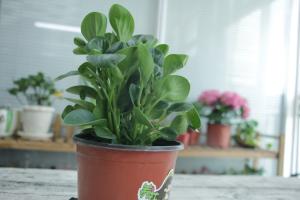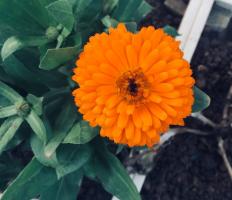Can You Plant Sweet Potatoes with Tomatoes?
Many gardeners love to experiment with companion planting, and one common question that arises is whether sweet potatoes and tomatoes can be grown together. The short answer is yes, sweet potatoes can be planted with tomatoes. However, there are some important considerations to keep in mind before you start planting.
1. Soil and Space Requirements
Sweet potatoes require well-draining soil that is rich in organic matter, while tomatoes prefer soil that is slightly acidic with a pH between 6.0 and 7.0. When planting both of these crops together, it is essential to prepare the soil properly, adding compost or other organic matter to achieve the ideal growing conditions for both. Additionally, sweet potatoes require more space to grow compared to tomatoes, with each plant requiring at least 3 to 4 square feet of space.
2. Watering and Fertilization
Both sweet potatoes and tomatoes require consistent watering throughout the growing season. However, sweet potatoes are more drought resistant than tomatoes and can tolerate dry periods better. Overwatering can lead to rotting of sweet potatoes, so it is important not to overwater. Fertilization is also important for both crops, with sweet potatoes requiring more nitrogen than tomatoes. When planting together, it is recommended to fertilize with a balanced fertilizer to ensure both crops receive the necessary nutrients.
3. Pests and Diseases
One potential issue when planting sweet potatoes and tomatoes together is pest and disease management. Both crops are susceptible to similar pests and diseases, including flea beetles, aphids, and spider mites. It is important to monitor for these pests and treat them right away to prevent extensive damage. Crop rotation can also help prevent disease buildup in the soil, as sweet potatoes should not be planted in the same spot for at least three years, while tomatoes should be rotated annually.
4. Harvesting and Storage
Timing when planting sweet potatoes and tomatoes together is important, as they have different growing seasons. Sweet potatoes require a long growing season of at least 100 to 140 days before they are ready to harvest, while tomatoes typically require around 75 to 100 days. When it comes to storage, sweet potatoes require a cool and dry environment, while tomatoes prefer a moderately cool temperature. Proper storage conditions will ensure that both crops stay fresh and flavorful for an extended period of time.
Conclusion
If you are interested in planting sweet potatoes with tomatoes, it is important to take into account the soil and space requirements, watering and fertilization needs, pest and disease management, and harvesting and storage considerations. With proper planning and care, these two crops can be grown together with great success, providing a bountiful harvest for you to enjoy.

 how many times do yo...
how many times do yo... how many planted tre...
how many planted tre... how many pine trees ...
how many pine trees ... how many pecan trees...
how many pecan trees... how many plants comp...
how many plants comp... how many plants can ...
how many plants can ... how many plants and ...
how many plants and ... how many pepper plan...
how many pepper plan...






























